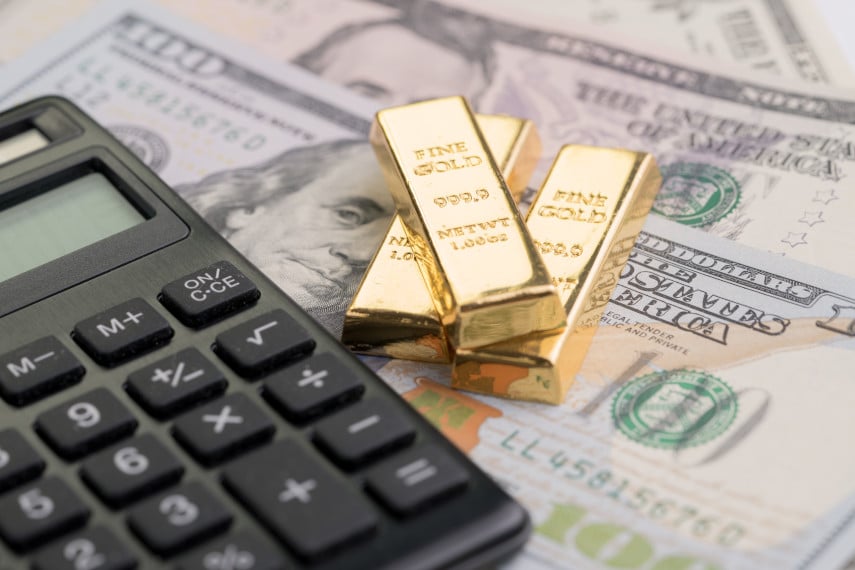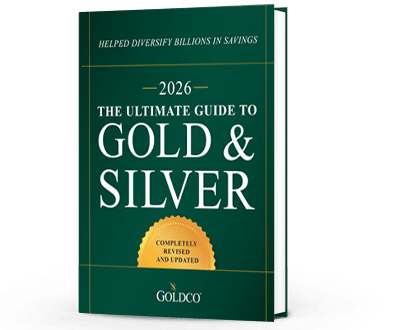6 Indicators of a Potential Recession
It seems that in the media today there are more and more mentions of the dreaded R-word: recession With growing economic uncertainty, the threat of potential recession seems to be growing as...
Economy

At Goldco, we’ve written quite a bit about how gold can perform better than stocks and bonds. But many investors remain set in their ways, and ignore how gold can help improve the performance of their portfolios.
When the economy turns south, however, and especially when stock markets are at risk of collapse, many investors look to protect their assets against loss. But what assets do they turn towards to protect themselves?
Believe it or not, many investors don’t look to protect themselves. They’ve bought into the notion that remaining invested in stock markets over the long term and not pulling money out during crises is the best way to invest. But many millions of investors found out the hard way during the 2008 financial crisis that that wasn’t the best investment strategy.
Stock markets lost over 50% of their value from their peak in 2007 to their trough in 2009, and in fact it wasn’t until 2013 that they had recovered to their pre-crisis levels. Investors who remained invested in stocks during that time period would have waited nearly six years just to recoup their losses, six years in which they could have invested in alternative assets and made gains rather than just trying to get back to even.
Many other investors try to protect themselves by investing in cash or cash equivalents such as money market mutual funds. But cash isn’t a great investment either, as we’ll see in a minute.
If you’re reading this article, it’s likely because you’re interested in investing in gold, or want to learn more about investing in gold. Perhaps you’re wondering why people would choose cash over gold. It’s a puzzling question, particularly when you compare the performance of gold to the performance of the dollar.
Gold has been used as money for millennia, but the era of the classical gold standard only really began in the early 19th century, as Great Britain officially adopted the gold standard. By the early 1870s, most major industrialized nations had adopted the gold standard either officially or de facto, ushering in several decades of remarkable prosperity and economic growth that lasted until the outbreak of World War I.
With the outbreak of war, most countries quickly abandoned the gold standard, preferring instead to fund their war efforts through inflation, creating unbacked paper currency that resulted in prices rising wildly. The few attempts to return to gold ended up being abortive, with governments unwilling to return to gold at proper valuations. But gold continued to play a role in the world economy, particularly after World War II, when the Bretton Woods system established the partially gold-backed US dollar as the world’s reserve currency.
When the dollar was first officially adopted as the currency of the United States, it was defined as a specific weight of silver. The US remained officially on the silver standard until 1900, when the Gold Standard Act redefined the dollar as 23.22 grains of gold.
Like most other countries, the US engaged in inflation to pay for its war effort. But as gold flowed into the country from war-torn Europe, the US fared better than most European countries. Politicians didn’t like that, however, as the gold standard bound their hands and prevented them from engaging in interventionist economic policies. That’s why President Franklin Roosevelt banned the private ownership of gold in 1933, then immediately revalued gold from $20.67 an ounce to $35 an ounce to give the government more dollars to spend.
After World War II, the US took advantage of its position as the issuer of the world’s reserve currency to create more dollars than it had gold backing. While private citizens couldn’t redeem their dollars for gold, other countries could, by coming to the US Treasury’s “gold window.”
Eventually the outflows of gold became so great that the Treasury realized there was a risk that all of its gold might be given away. And thus President Nixon closed the gold window on August 15, 1971. From that point on, there were no longer any restrictions on the Federal Reserve’s ability to create money, and the money supply began to explode.
Looking at official price inflation statistics, the era from 1913 (when the Federal Reserve was created) to 1933 was one of relatively stable prices, with the CPI index rising from 9.8 in January 1913 to 12.6 in April 1933, an average annualized gain of about 1.2%.
The inability of private citizens to redeem their dollars for gold allowed the government to inflate the currency more than before, and so the CPI index rose from 12.6 in April 1933 to 40.7 in July 1971, an average annualized gain of about 3.1%. But since 1971, the index has risen to 259.918 in August 2020, an average annualized gain of over 3.8%.
That means that since 1971, the dollar has lost nearly 85% of its purchasing power. And what about gold?
Gold’s official government valuation was $35 in August 1971, while its market price was slightly higher, at $43 an ounce. But once gold was allowed to trade freely on the market, and governments no longer tried to keep the market price at $35 an ounce, gold began to climb. Today, gold is valued at $1,898.20 at the time of writing, meaning it has averaged an annualized gain of 8% since 1971.
That’s pretty good performance. If you had to choose between two assets for your portfolio, and you had the choice between one that lost 85% over a 50-year period versus one that gained 8% per year, which would you choose?
Once you look at the numbers, you can’t deny that investing in gold is a perfectly fine way to protect your assets and even to grow your wealth. And the more you look at the numbers, the more you ask yourself, “Why didn’t I invest in gold earlier?”
Indeed, if you had invested in gold at the beginning of 2001, when it was trading at $268 per ounce, you would have seen annualized gains of 10.4%, more than double the 5.1% gains made by the Dow Jones Industrial Average or the 4.9% made by the S&P 500.
But gold’s performance isn’t just a thing of the past, it’s also the way of the future. With a weakening economy and the potential for another financial crisis in the not too distant future, more and more investors are looking at gold to protect their assets.
For those with sizable amounts of assets already invested in retirement accounts, a gold IRA offers them the ability to roll over those existing assets into an investment in physical gold coins or bars, while retaining the same tax advantages as a conventional IRA. They can lock in gains they’ve already made from stock markets, roll over assets into a gold investment, and know that their wealth is protected by gold.
If you’re looking to diversify your investment portfolio, whether it’s to achieve better performance or to protect yourself against a market crash, gold can play an important role in helping you achieve your investment aims. To learn more about how gold can do that, contact the experts at Goldco today, and put yourself on the road to securing your financial future.

